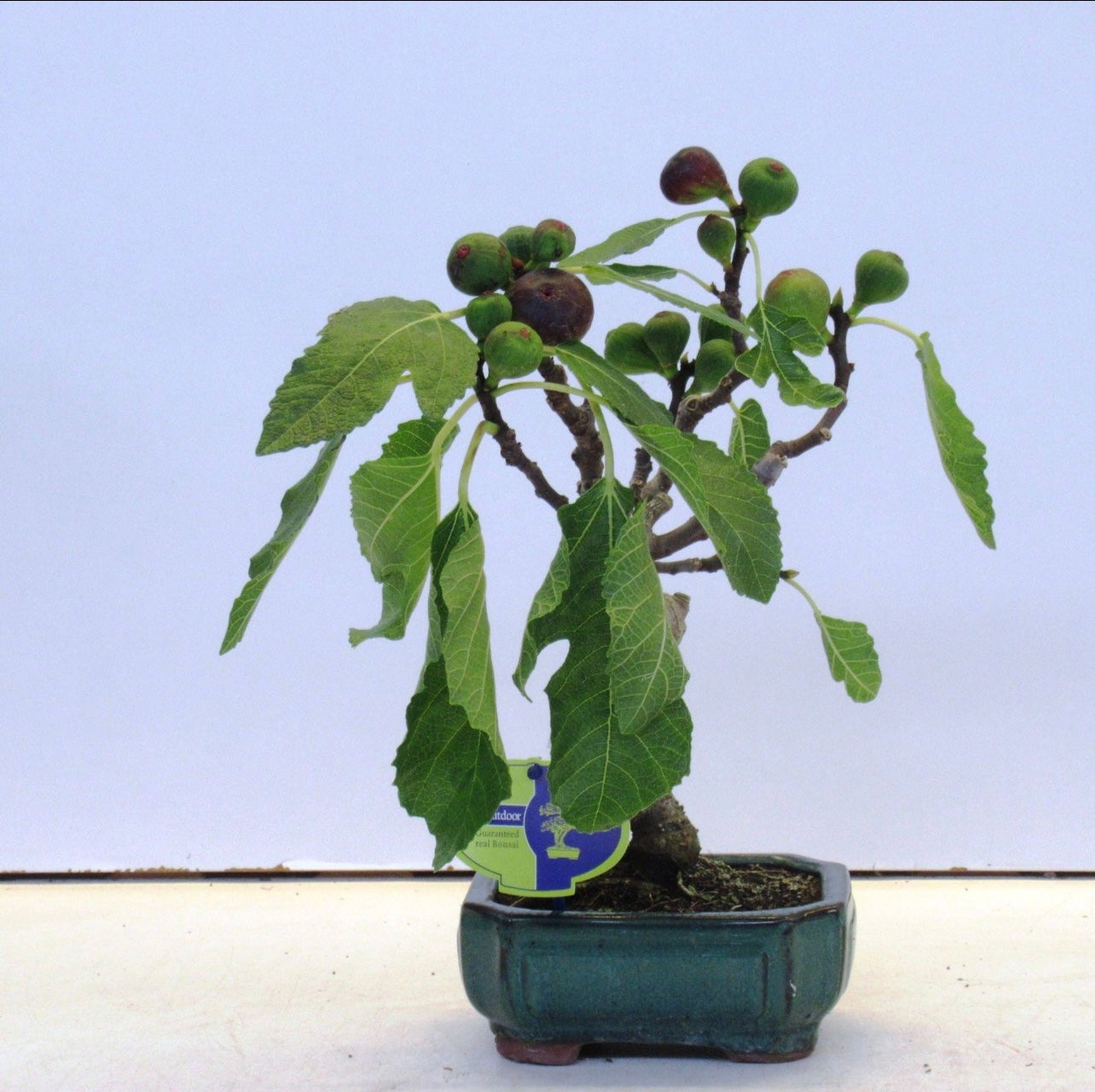تين بونزاي
تين بونزاي
Couldn't load pickup availability
ficus carica
Growing Ficus carica, commonly known as the fig tree, involves several key considerations to ensure a healthy and productive plant. Here’s a guide on how to grow Ficus carica:
1. Site Selection: Choose a sunny location with well-draining soil. Fig trees thrive in full sunlight and prefer slightly alkaline to neutral soil.
Ensure good air circulation around the tree.
2. Planting: Plant fig trees in late winter to early spring, or in fall in areas with mild winters.
Dig a hole twice as wide as the root ball and at the same depth. Space multiple trees at least 10-15 feet apart.
3. Watering: Provide consistent and deep watering, especially during dry periods. Fig trees prefer evenly moist but not waterlogged soil. Water newly planted trees more frequently until they establish a strong root system.
4. Mulching: Apply a layer of organic mulch around the base of the tree to conserve moisture, suppress weeds, and regulate soil temperature.
5. Fertilizing: Fertilize fig trees in early spring with a balanced fertilizer or a fertilizer formulated for fruit trees. Avoid excessive nitrogen, as it can promote vegetative growth at the expense of fruit production.
6. Pruning: Prune fig trees annually during late winter or early spring to remove dead, diseased, or crowded branches. Train young trees to develop a strong scaffold structure, and maintain an open canopy for sunlight penetration.
7. Winter Protection: In colder climates, provide winter protection by wrapping the tree with burlap or using other frost protection methods.
Mulch around the base of the tree to protect the roots from freezing temperatures.
8. Pest and Disease Control: Monitor for pests such as aphids, scale, or spider mites. Treat infestations promptly with insecticidal soap or neem oil. Figs are relatively disease-resistant, but watch for common issues like leaf spot or root rot.
9. Harvesting: Harvest figs when they are fully ripe. The fruit should be slightly soft and have a rich color. Figs do not ripen well once picked, so harvest them at the right stage.
10. Variety Selection: Choose fig varieties suited to your climate. Common varieties include ‘Brown Turkey,’ ‘Celeste,’ and ‘Mission.’ Consider if you want a common fig that bears fruit once a year or a “fertile” fig that produces two crops (breba and main crop).
11. Dormant Spray: Apply dormant sprays in late winter or early spring to control overwintering pests and diseases. Use horticultural oil or copper-based sprays.
12. Root Pruning: Consider root pruning every few years to manage the size of the tree and encourage better fruit production.
Growing Ficus carica can be rewarding, providing you with delicious figs when well-cared-for. Adjust care practices based on your local climate, soil conditions, and the specific variety of fig tree you’re cultivating.
Share







